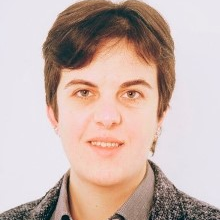Recent Advances in Sustainable Construction Materials and Structures
A special issue of Applied Sciences (ISSN 2076-3417). This special issue belongs to the section "Civil Engineering".
Deadline for manuscript submissions: 20 March 2026 | Viewed by 4874
Special Issue Editors
Interests: computational engineering; materials characterization; sustainable building materials; historical structures
Interests: computational engineering; materials characterization; sustainable building materials; historical structures
Interests: sustainability; numerical simulation; structural analysis; structural dynamics; constructions; finite element analysis; numerical modelling
Special Issues, Collections and Topics in MDPI journals
Special Issue Information
Dear Colleagues,
As the construction sector strives to address global environmental challenges, sustainable materials and structural innovations have emerged as critical areas of focus. This Special Issue aims to bring together the latest research and technological advancements that contribute to reducing the environmental footprint of construction activities. It seeks to highlight innovative approaches to developing eco-friendly materials, optimizing resource use, and designing resilient, energy-efficient structures. The issue welcomes interdisciplinary perspectives that integrate scientific, technical, and practical insights to foster sustainable construction practices and structural solutions.
Topics of interest for this Special Issue include, but are not limited to:
- Development and mechanical characterization of sustainable construction materials.
- Structural optimization for sustainability and resilience.
- Bio-based, earth-based, and renewable materials for construction applications.
- Advanced computational methods for sustainable design.
- Low-carbon concrete, alternative binders, and innovative cement technologies.
- Recycling and upcycling of industrial and construction waste.
- Energy-efficient and net-zero building systems.
Dr. Fernando Ávila
Dr. María Esther Puertas García
Dr. Chiara Bedon
Guest Editors
Manuscript Submission Information
Manuscripts should be submitted online at www.mdpi.com by registering and logging in to this website. Once you are registered, click here to go to the submission form. Manuscripts can be submitted until the deadline. All submissions that pass pre-check are peer-reviewed. Accepted papers will be published continuously in the journal (as soon as accepted) and will be listed together on the special issue website. Research articles, review articles as well as short communications are invited. For planned papers, a title and short abstract (about 100 words) can be sent to the Editorial Office for announcement on this website.
Submitted manuscripts should not have been published previously, nor be under consideration for publication elsewhere (except conference proceedings papers). All manuscripts are thoroughly refereed through a single-blind peer-review process. A guide for authors and other relevant information for submission of manuscripts is available on the Instructions for Authors page. Applied Sciences is an international peer-reviewed open access semimonthly journal published by MDPI.
Please visit the Instructions for Authors page before submitting a manuscript. The Article Processing Charge (APC) for publication in this open access journal is 2400 CHF (Swiss Francs). Submitted papers should be well formatted and use good English. Authors may use MDPI's English editing service prior to publication or during author revisions.
Keywords
- construction materials
- sustainable structures
- earth-based materials
- green technologies
- construction recycling
- materials characterization
- computational methods
- sustainable structural design
Benefits of Publishing in a Special Issue
- Ease of navigation: Grouping papers by topic helps scholars navigate broad scope journals more efficiently.
- Greater discoverability: Special Issues support the reach and impact of scientific research. Articles in Special Issues are more discoverable and cited more frequently.
- Expansion of research network: Special Issues facilitate connections among authors, fostering scientific collaborations.
- External promotion: Articles in Special Issues are often promoted through the journal's social media, increasing their visibility.
- Reprint: MDPI Books provides the opportunity to republish successful Special Issues in book format, both online and in print.
Further information on MDPI's Special Issue policies can be found here.







